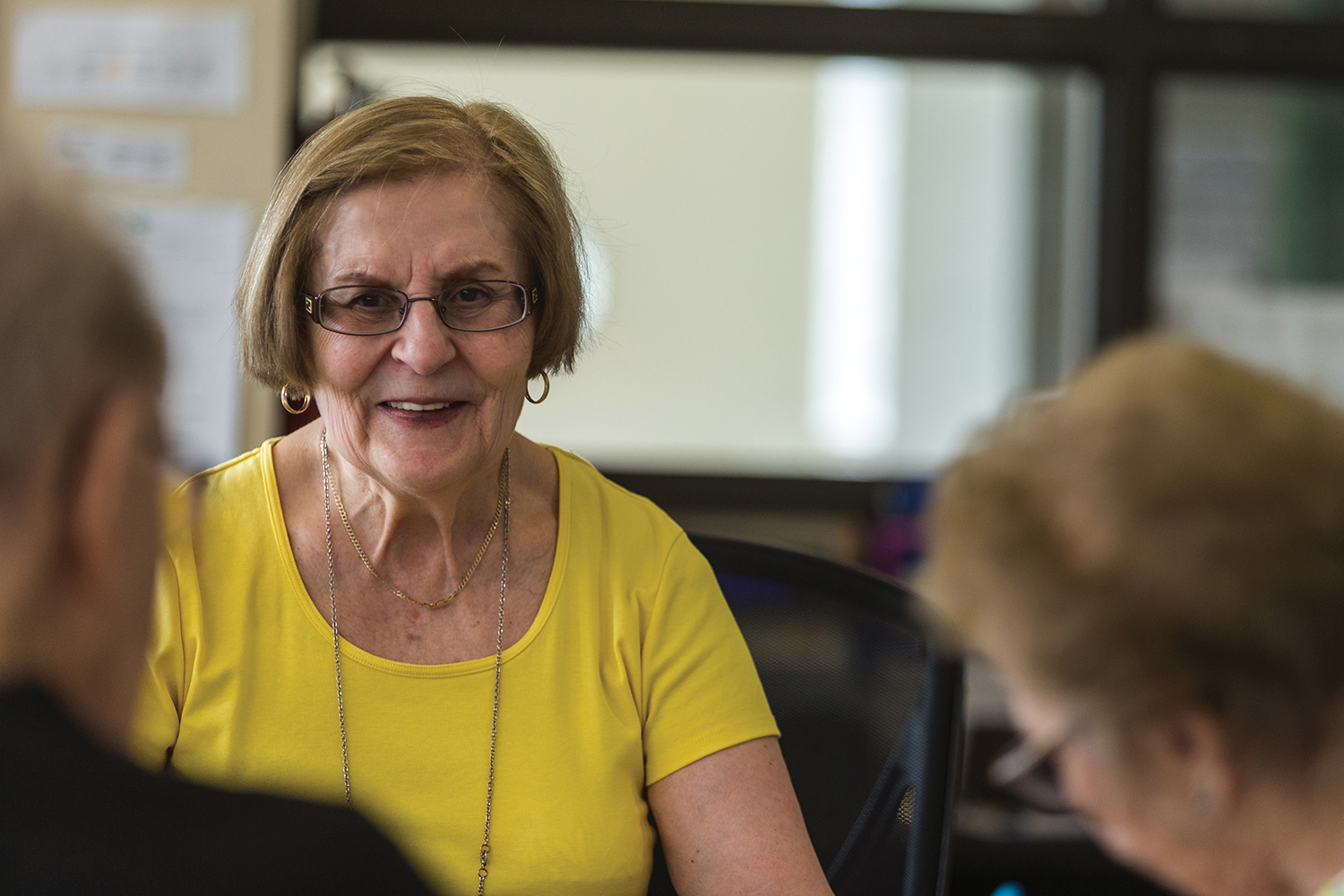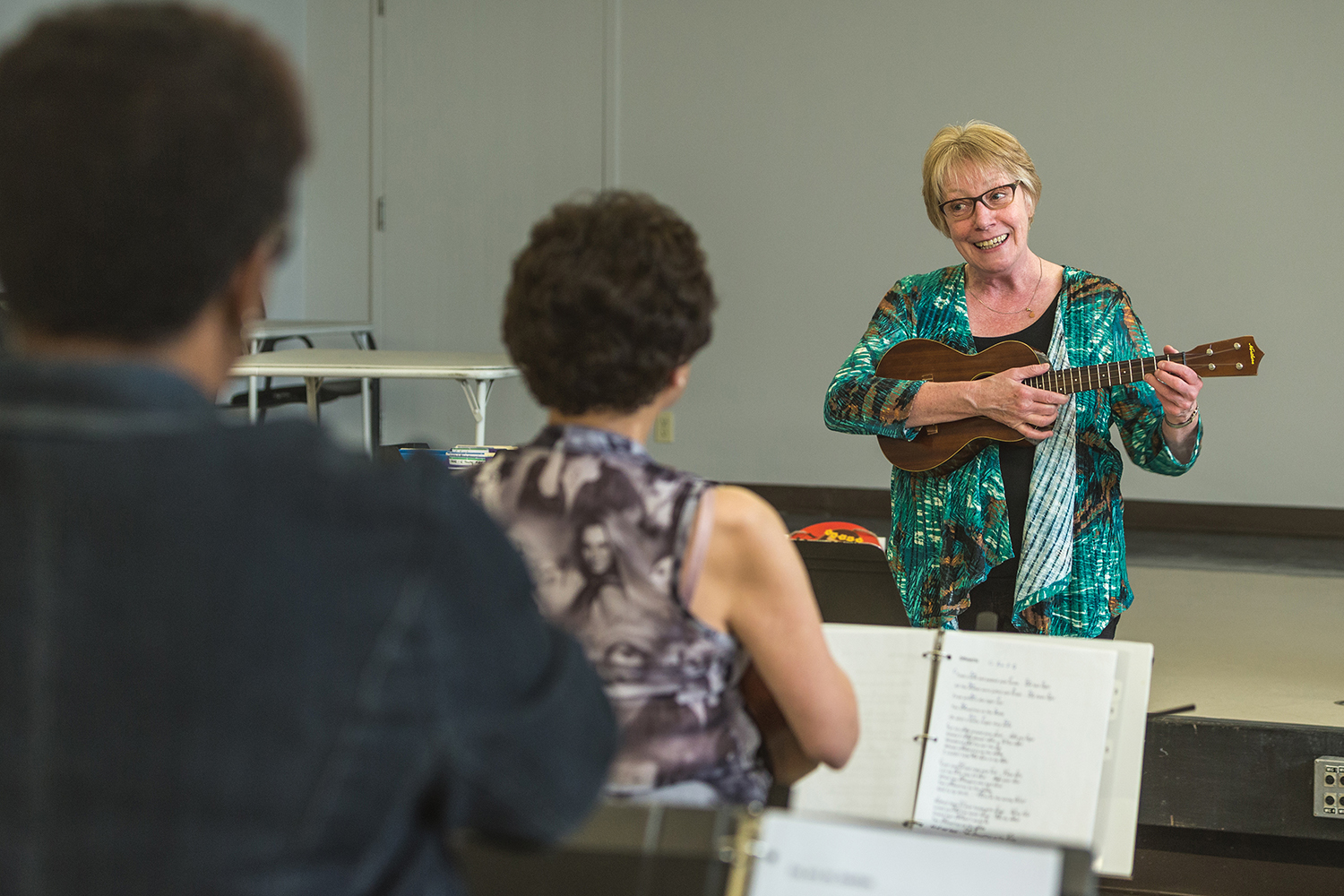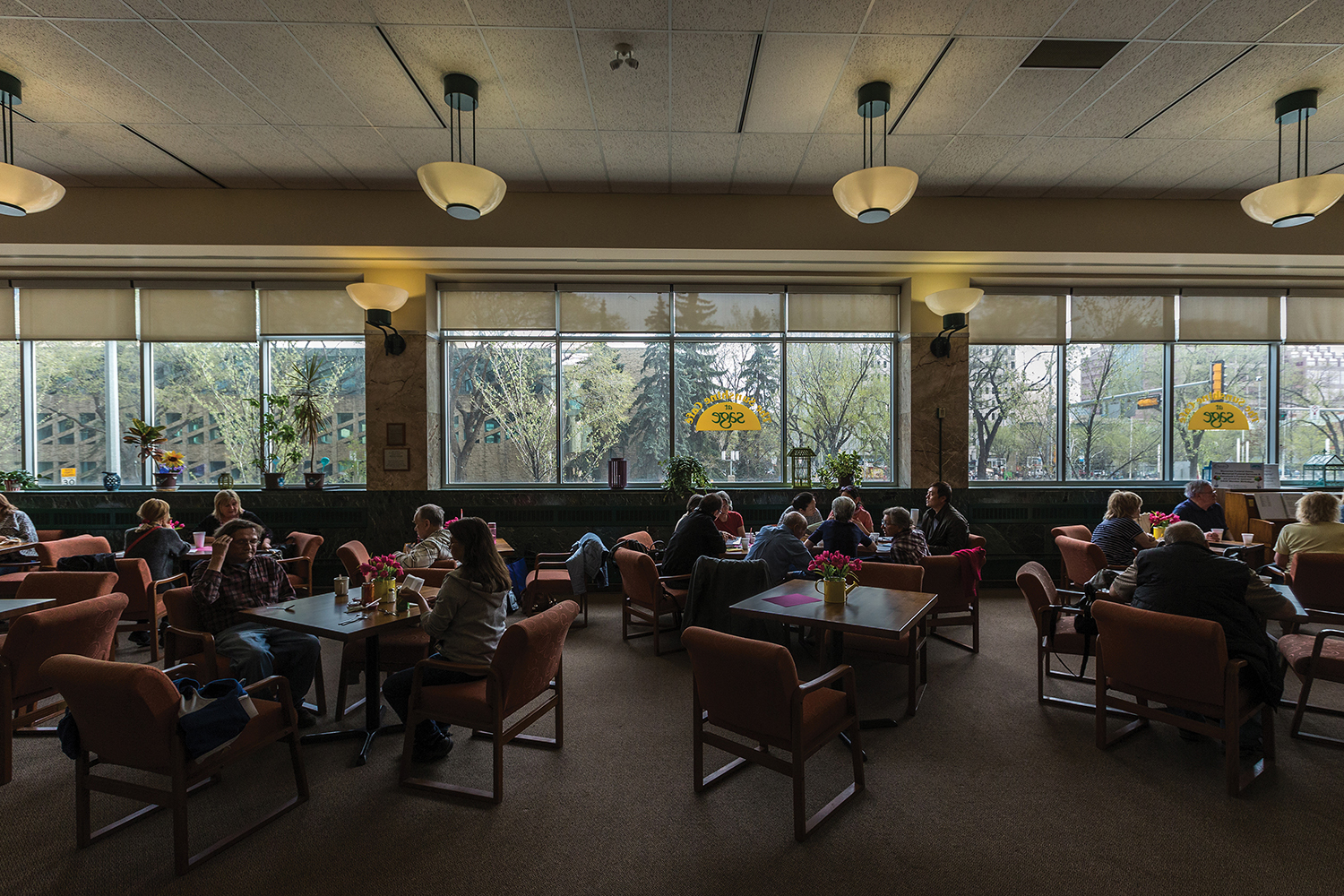June 1, 2016
A seniors’ association leans on and learns from those it helps
For most organizations, there would be nothing noteworthy about an employee running its Facebook page. But when Joan Carlson first suggested she do exactly that, it was different. Carlson was a volunteer, and the account was for the Sage Seniors Association. And as a senior herself, Carlson wasn’t who most people imagined when they thought ‘social media savvy’. But going well beyond her duties at Sage, Carlson proved to be a counterexample to the stereotype that all seniors struggle with or even fear new technology.
Carlson, who works the main phone lines twice a week, noticed that Sage had a Facebook page, but it was rarely in use. She brought it up a few times, but the staff was initially hesitant.
“They said seniors don’t have knowledge about computers; they don’t like them,” Carlson says. “I said that’s not true, that it’s like the chicken and egg. If you don’t help and encourage them, they don’t learn and become frustrated. Some won’t get it, but not all. You can’t generalize like that.”
Carlson convinced the organization, and now the 45-year-old agency combats generalizations against seniors while providing space and resources for all seniors to shine.

Through the work of 25 staff members and more than 200 volunteers like Carlson, Sage promotes and protects the lives of seniors in all situations, from social and intellectual stimulation, to safety net services for the at-risk, as well as research and advocacy on issues affecting older people.
Given the diversity of its clients, Sage needs the funds and flexibility to serve them – something ECF provides through the Douglas Milton Campbell Estate Fund, a form of philanthropy Sage Assistant Executive Director Karen McDonald says many people overlook, much like the seniors it helps. The fund was established in 2007, and since then it’s provided annual grants amounting to more than $177,000 to Sage.
“When he made the initial endowment, his two main priorities were housing and volunteerism,” McDonald says, referencing two of Sage’s biggest needs. “And for us to know that every year there’s this gift that’s sitting in trust in the Community Foundation – that fixes a problem with funding in general, which is that it typically comes with a lot of very rigid expectations in terms of how it’s going to be spent. In our case the endowment allows us to support areas of our programming that don’t typically get funded from other sources.”
The Association’s 20-plus programs vary, and address the needs of the whole person. Seniors can get their taxes done, find housing information, join the philosophy club, and take bus trips to cultural institutions. The basement classrooms hold English as a second language, line dancing and yoga classes, as well as the Pride Group meetings for LGBTQ members, all down the hall from the auditorium, where the Geri-Actors, an intergenerational drama troupe, play and perform.
Their Full House program is only the second in Canada that effectively addresses compulsive hoarding, and for the last 14 years, the SAGE Seniors Safe House has provided food, accommodation, health support and outreach for past residents after their stay. “Last year, 93 per cent of Safe House residents didn’t go back to the abusive situation,” McDonald says, “which is an exceptional rate within that sector.”

Then there’s the Sunshine Caf, Sage’s greeting to the city, where giant, City Hall-facing windows welcome all ages for a home-style breakfast or lunch, prepared from scratch on site. It’s the organization’s public point of contact, where everyone from business people to young mothers with strollers know it only as a nice place to stop in during the day, and where Carlson started volunteering, shortly after her first steps through the door.
“I just happened to want to go for lunch,” she says. “I wasn’t a senior yet but figured I’d go in. One of the volunteers was having lunch – it was kind of crowded, so I asked if I could sit with her. We started talking and she said I should volunteer. That was my first day.”
After a couple of years and a few friendly suggestions to staff, Carlson showed her social media chops and took control of Sage’s Facebook account. She was the perfect candidate, given she was already an active, typical Facebook user herself: “I post pictures, and links to things I’m interested in. I’m part of a John Fogerty from Creedence Clearwater Revival group. I like sharing cat pictures and videos.”
Carlson began posting seniors and Sage related links and pictures, and it wasn’t long before their page gained followers and likes. In the summer of 2015, another active senior Facebook user contacted Carlson through Sage’s account, asking for housing information. He was about to be evicted and didn’t know what to do. After some back and forth, Carlson convinced him to come to Sage to sort it all out. “We found him a better place closer to Whyte Ave., with a little garden. He’s posted quite a few things on our page since then, saying how much we helped. And now we’re Facebook friends, too!”
Along with embodying the spirit of Campbell’s fund – housing and volunteerism – Carlson’s example shows that, of course, not all seniors are any one thing, and they’re plenty capable of learning and helping themselves. And as Sage has shown, they do a lot more than that, and societies that ignore seniors are worse off for doing so.

“We worked with researchers at the U of A to look at the economics of aging and challenging the myth of seniors as economic drains,” McDonald says. “When you look at things like unpaid care-giving – taking care of grandchildren, their aging spouses, their neighbours – when you look at volunteerism, when you look at philanthropy, all things that seniors tend to be the largest age group taking part in, those aspects of our economy often go unaccounted for. So when we base cost to the system only on things like emergency room visits, we aren’t getting the whole picture.”
Following Carlson’s lead, Sage now has a designated ‘device guy’ who helps seniors navigate their cell phones, laptops and tablets, as well as a multimedia expert who helps set up blogs, business documents and videos, the need for which will only increase with time. As for Carlson, she just wants to “keep things interesting and lively” on Facebook, in order to get the word out and keep seniors involved, up-to-date and clicking. She sees Sage, and technology, as another way to connect, something everyone wants, regardless of age. “I don’t like to be isolated, especially as I get older and lose family members,” she says. “I don’t want my world to get small; I want it to get bigger. I want more people, not less. So tomorrow morning, I’ll get up, go out, meet more people and help them.”